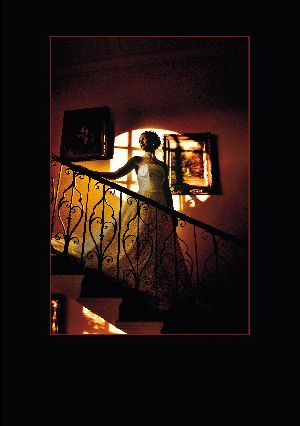articles/Weddings/badweatherwedding-page3
Coping with photographing bad weather weddings - part 3 of 1 2 3 4
Published 01/10/2007

Tips for a cold dayCold Day Wedding
Working on a cold winter's day also throws up potential pitfalls - the fogging of lenses due to dramatic changes in temperature as you go inside a venue is obviously an issue.
In extreme cold, I have been in a position where I can no longer feel the camera in my hand. In this situation I tend to wrap the camera strap a couple of times around my wrist as it would be very easy to drop the equipment.
Colder weather is harder on batteries so obviously it pays to have plenty of spares at the ready just in case. One photographer who had issues with an unhappy client told me he'd run out of batteries - it's not an excuse.
As a rule of thumb when I shoot in wet or cold conditions I try to think of the clients' and their guests' comfort before my own. I work very quickly and without fuss, trying to keep a cheery manner so that they have very little time to think about how uncomfortable they may be feeling. Given a choice, in poor weather or at winter weddings, I would shoot any 'formals' inside anyway as you know who they will blame for getting wet!
Lighting indoors or dark, winter weddings
A big headache is lighting any formals when shooting indoors, especially at evening receptions or at winter weddings where everything will be indoors.

For any candid or natural shots I always shoot hand held, using fast lenses and slow shutter speeds. I often shoot at apertures of f2 or f1.4 with flash bounced off a surface beside or behind me to soften the effect of the flash. Shutter speeds will range from 1/60 sec down to ¼ second depending on the situation. Of course, these days with digital it is easy to up the ISO rating although, for me, I prefer to shoot at no higher than 800ISO. Others I know shoot happily at 1600 or even 3200ISO without flash and produce stunning results as long as they are careful about the exposure, avoiding excessive noise.
For more formal or posed shots taken inside (all the time for winter weddings), I use a tripod, shoot at 400ISO and work at slow shutter speeds combined with on-camera flash. The technique I use for groups is either 1/15th or 1/8th second at f4, shooting from a tripod. I use a remote release to avoid moving the camera and turn the flash-head away from the subjects, bouncing it into my Lastolite reflector which is balanced on my shoulder and acts as a softbox. If there is any window adding light to the environment I bounce the flash so that the light is coming from the same direction to add to the 'natural feel'" of the image.
For small and medium-size groups I bounce off the white side of the reflector but if it is a much larger group I have been know to use the silver side to give the light a lift. I have also used this technique to light couples and it works very well, giving predictable, even lighting in what might otherwise be difficult circumstances.Wedding
Generally when shooting bride and groom pictures indoors, I will expose for any environmental light at the chosen location. Regardless of how dark a room or corridor may look, there is always light to be used. I will often shoot with shutter speeds at around 1 to 2 seconds and use a tripod for creative shots with apertures ranging from f4 down to f1.4 depending on the effect I am after. This may be lit by supplementary lighting such as on-camera flash or my small video light. I am also prone to using something within the setting such as a bare bulb from a table lamp on a bedside cabinet if I feel it will do the job.
The aim is to use the atmosphere of the situation rather than blitz the scene with flash and therefore kill the image. Again, when confronted with difficult lighting situations, there is no substitute for experience and knowing what you are doing. However, the trick is to try to keep things simple. I have never taken studio lights to a wedding as I feel this would alienate clients who want things relaxed and quick. By using this approach I feel I actually manage to get more from them as they don't feel intimidated by a team of photographers and a load of gear. Putting them at ease and working efficiently allows them to enjoy any posed images and enables me to produce something special before they race back to the reception.
Please Note:
There is more than one page for this Article.
You are currently on page 3
- Coping with photographing bad weather weddings page 1
- Coping with photographing bad weather weddings page 2
- Coping with photographing bad weather weddings page 3
- Coping with photographing bad weather weddings page 4
1st Published 01/10/2007
last update 09/12/2022 14:51:27
More Weddings Articles
There are 0 days to get ready for The Society of Photographers Convention and Trade Show at The Novotel London West, Hammersmith ...
which starts on Wednesday 15th January 2025





